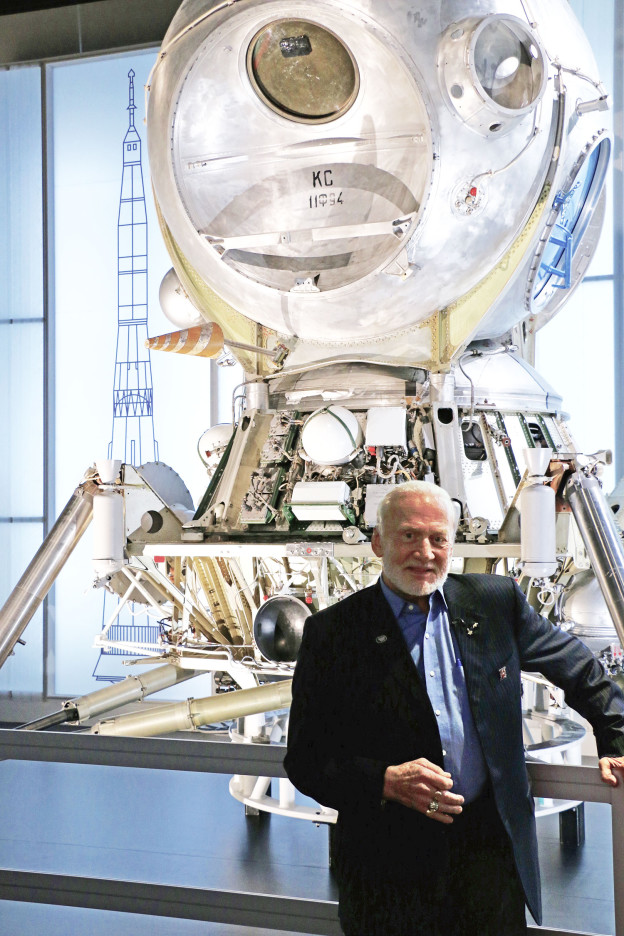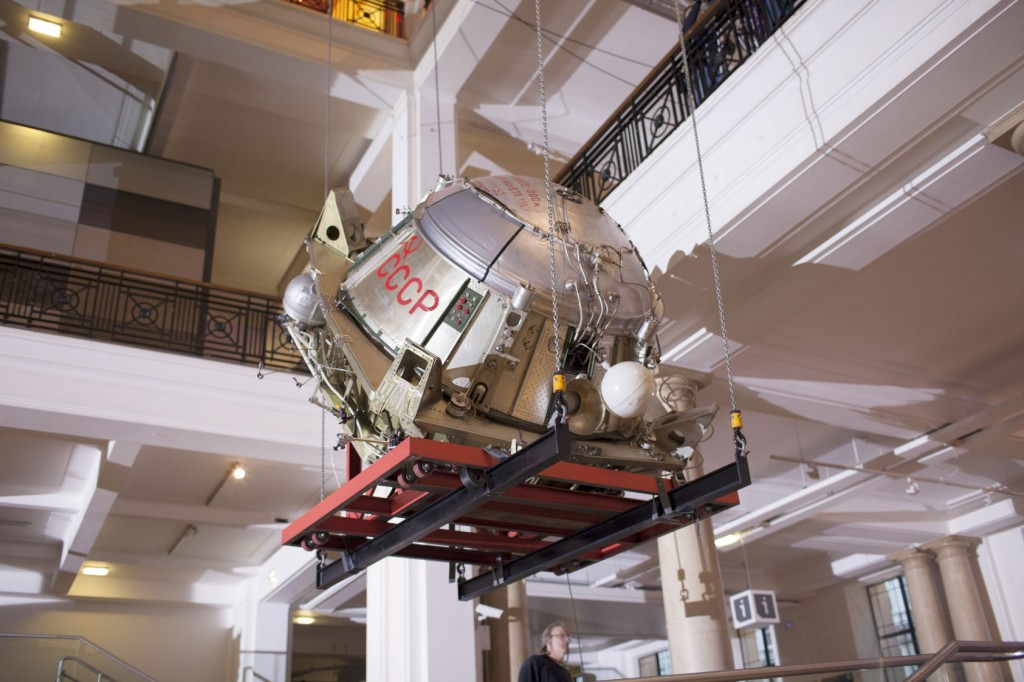On 20 July 1969, Buzz Aldrin and Neil Armstrong made their historic Apollo 11 moonwalk, becoming the first two humans to set foot on another world.

Yesterday Buzz visited the Science Museum’s Cosmonauts exhibition, which opens to the public on the 18 September and has at its heart the 3.5 ton Lunniy Korabl (“lunar ship”) – or LK-3.
The single cosmonaut moon lander was built by the USSR in the same year that Apollo 11 took Buzz into the history books and was moved to the museum earlier this year for our landmark exhibition.
Would Buzz have liked to have used an LK-3 to land on the moon? He gave me an emphatic ‘no.’
The same engine was used for both descent and ascent from the moon while the American moon lander – a copy of which Buzz inspected in the museum, along with Apollo 10 – used two separate engines. If the Soviet landing engine failed ‘they were splattered.’
One other key design difference was the lack of a tunnel to link the lander to the orbiting Soviet ‘mother ship’, the LOK (lunar orbiting cabin). By comparison, Apollo’s lander was connected by a tunnel to the Lunar Excursion Module after docking (Aldrin himself had helped devise procedures for docking in the Gemini 12 mission).
To use the LK-3, a cosmonaut would have to leave the ship and spacewalk to the lander, letting himself in by the lander’s oval hatch.

The Soviet moon lander was intended to be launched using the behemoth N1 rocket. But all four test-flights of the N1 launcher had ended in failure. While some earlier unmanned LKs were launched into Earth Orbit, none was launched towards the Moon.
Aldrin recounted how he was training for Apollo 11 around a month before the launch, when the news of the failure reached America. ‘Someone open the training Command Module door and asked: “Do you need another month of study, of preparation?”
He knew the N1 failure was a major setback for the rival Soviet programme. ‘We talked about it and said, no, we were ready to go.”
Buzz told me he was aware of Soviet unmanned circumlunar missions, known as Zond, but knew that America was ahead of its rivals in December 1968 with the launch of Apollo 8, the first manned spacecraft to leave Earth orbit, reach the Earth’s Moon, orbit it and return safely to Earth.
He was impressed by some aspects of the rockets developed by the Soviet Union’s Chief Designer, Sergei Korolev, but it was clear from his replies that the spirit of the space race was still alive.
Buzz was ambivalent about US support for Russian space efforts and when it comes to Russian plans for Mars, he said diplomatically that he wanted to find out more (Buzz is visiting the UK to promote his children’s book “Welcome to Mars”).
According to Buzz, the Cosmonauts exhibition shows the story of a ‘competitor that lost’.
But, of course, he was referring to the race to the moon. When it comes to the first humans in space, the Soviet Union led the way. ‘We had a programme laid out and we just let them do what they want,’ said Aldrin.
When he arrived at the Science Museum, Buzz was greeted by the Director, Ian Blatchford; Chair of the Board of Trustees, Dame Mary Archer; Trustee and former Science Minister, David Willetts; and Ed Vaizey, Minister of State for Culture, Communications and Creative Industries.
He was accompanied around Cosmonauts by his son Andy Aldrin, space executive and expert on Soviet space endeavour, and by Deputy Keeper, Doug Millard.
Earlier this year, Alexei Leonov, who was being prepared to be the first Soviet cosmonaut on the moon, described how he had watched Apollo 11’s launch from a facility in Moscow.
Disappointed, though united by the Cosmists vision of human space exploration, he kept his fingers crossed for his astronaut comrades, he said.
But the Soviet lunar dream officially ended in 1974. Their programme had been starved of money compared with Apollo and was dogged by political infighting.
The Soviet Union pursued manned and unmanned programmes, dissipating scarce resources, and lost momentum, not least when Korolev died in 1966.
One could sense Leonov’s frustration with how close they had come when he told an audience in the Science Museum how ‘six spacecraft orbited the moon without a man on board.’
Cosmonauts: Birth of the Space Age is open from 18 September 2015 – 13 March 2016. The exhibition is supported by BP and has additional support from ART RUSSE (Major Funder) and the Blavatnik Family Foundation.